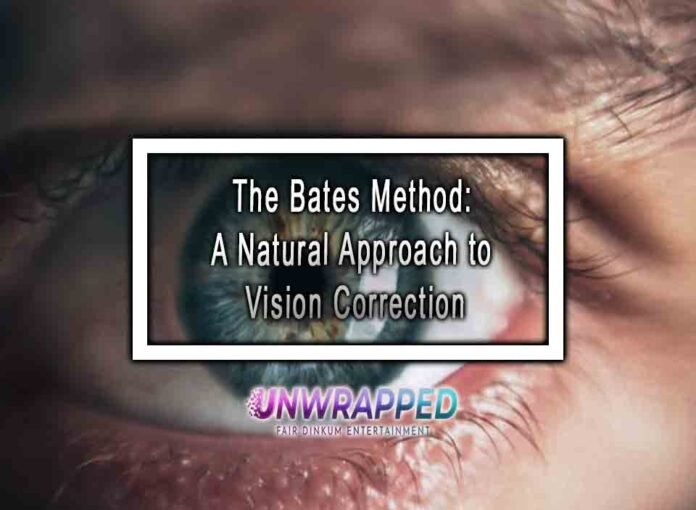Understanding the Bates Method, Its Techniques, and Controversies
The Bates Method is a natural vision improvement technique developed in the early 20th century by Dr. William Horatio Bates, an American ophthalmologist. Dr. Bates believed that refractive errors such as myopia (nearsightedness) and hyperopia (farsightedness) were caused by habitual strain on the eyes. He argued that this strain could be alleviated through specific practices, potentially reducing or eliminating the need for corrective lenses.
Despite its long history, the Bates Method has sparked debate in the medical community, with some techniques questioned for their efficacy and safety. This article delves into the Bates Method, its techniques, claims, and the surrounding controversies.
What Is the Bates Method?
Dr. Bates theorized that glasses and other corrective lenses might increase strain on the eyes rather than alleviating it. His solution was a series of natural exercises aimed at relaxing the eyes and improving vision through enhanced focus and mental imagery.
While modern science has challenged some of Bates’ claims, proponents of the method highlight anecdotal evidence of its success in improving vision naturally.
The Core Techniques of the Bates Method
1. Palming
Palming is a relaxation technique where individuals:
- Cover their closed eyes with their palms to block out light.
- Relax the muscles around the eyes, promoting mental and physical calmness.
Benefits: Advocates claim it relieves tension and provides temporary vision clarity.
2. Imagination
Dr. Bates believed that clear vision was as much about the mind as the eyes. He encouraged:
- Visualizing objects or letters as darker, sharper, or more defined.
- Practicing with a test card to mentally “see” details.
Benefits: According to Bates, training the brain to visualize clearer images enhances the eyes’ ability to focus.
3. Swinging
Swinging involves:
- Gently swaying the body side-to-side while focusing on a distant object.
- Alternatively, moving the eyes in a swinging motion without moving the head.
Benefits: Proponents believe it relaxes the eyes, enhances peripheral vision, and reduces strain.
4. Central Fixation
This technique teaches:
- Focusing on a small area of an object rather than trying to see everything in detail at once.
- Understanding that the fovea (the part of the retina responsible for sharp central vision) processes fine details more effectively than surrounding areas.
Benefits: Reducing over-focus and encouraging a natural gaze may alleviate strain.
5. Sun Gazing
Dr. Bates recommended allowing sunlight to shine on closed eyelids to stimulate the eyes.
Caution: This practice must be approached carefully, as direct sunlight exposure can harm the eyes.
Scientific Evaluation of the Bates Method
While some individuals report positive outcomes from practicing the Bates Method, modern ophthalmology often disputes its scientific validity.
Studies and Criticism
- Flashing Technique: Bates noticed temporary vision improvement after patients rested their eyes by closing them briefly. A 1982 study suggested this was due to increased eye moisture rather than strain relief.
- Effectiveness: Many experts argue that improvements reported by practitioners are either temporary or psychosomatic, with little scientific evidence to support long-term benefits.
Potential Risks of the Bates Method
While the Bates Method emphasizes natural vision improvement, there are risks to consider:
- Delaying Medical Care: Relying solely on these techniques might lead individuals to postpone essential eye care, potentially worsening conditions.
- Sun Damage: Misuse of sun gazing techniques can result in serious eye damage, including retinal burns.
Recommendation: Always consult an ophthalmologist for persistent vision issues and routine eye exams.
Modern Perspectives on Vision Improvement
Although the Bates Method has its advocates, there are proven, science-backed approaches to managing and improving eyesight:
Glasses and Contact Lenses
- Correct refractive errors and provide immediate improvement.
- Options like dailies contact lenses are convenient and affordable.
Refractive Surgery
- Procedures like LASIK can permanently correct vision for suitable candidates.
Eye Exercises and Digital Hygiene
- Practices like the 20-20-20 rule (looking away from screens every 20 minutes) can reduce digital eye strain.
Nutrition and Lifestyle Changes
- A diet rich in omega-3 fatty acids, vitamin A, and antioxidants supports overall eye health.
Who Can Benefit from the Bates Method?
The Bates Method may be appealing to individuals who:
- Are curious about natural vision improvement techniques.
- Want to complement traditional treatments with relaxation practices.
- Seek stress relief for strained eyes caused by screen usage.
Should You Try the Bates Method?
Before attempting the Bates Method, consider these factors:
- Consultation: Always consult an eye care professional to rule out underlying conditions.
- Supplement, Not Substitute: Use Bates techniques as a supplement to, not a replacement for, professional eye care.
- Consistency: Results, if any, may require consistent practice over time.
Conclusion
The Bates Method offers an alternative approach to vision improvement through relaxation and natural exercises. While its effectiveness remains debated in scientific circles, some individuals report benefits in reducing eye strain and improving mental clarity.
However, it’s crucial to approach these techniques with caution and integrate them into a broader strategy that includes regular eye care and a healthy lifestyle.
Your Eyes Deserve the Best Care
Explore natural methods like the Bates Method alongside proven medical solutions. Remember, professional guidance is key to preserving your vision and overall eye health.
References
- Bates, W. H. (1920). Perfect Sight Without Glasses. New York: Central Fixation Publishing.
- “The Science Behind Vision Therapy,” American Optometric Association.
- Nevala, N. (1982). “Temporary Vision Improvement and Moisture Effect,” Journal of Ophthalmology.
- “Nutrition and Eye Health,” Mayo Clinic.
- “Managing Digital Eye Strain,” American Academy of Ophthalmology.
See Also: 8 Exceptional Benefits of Color Therapy for People with Disabilities










